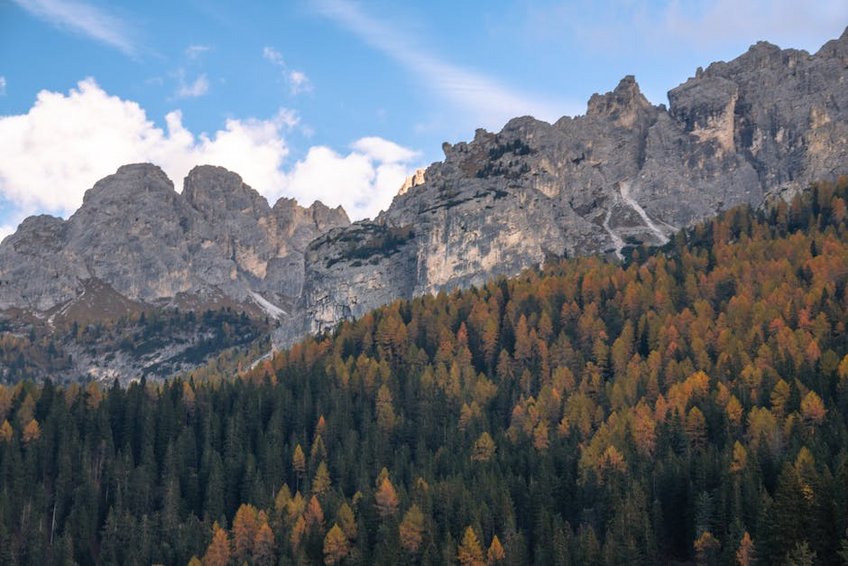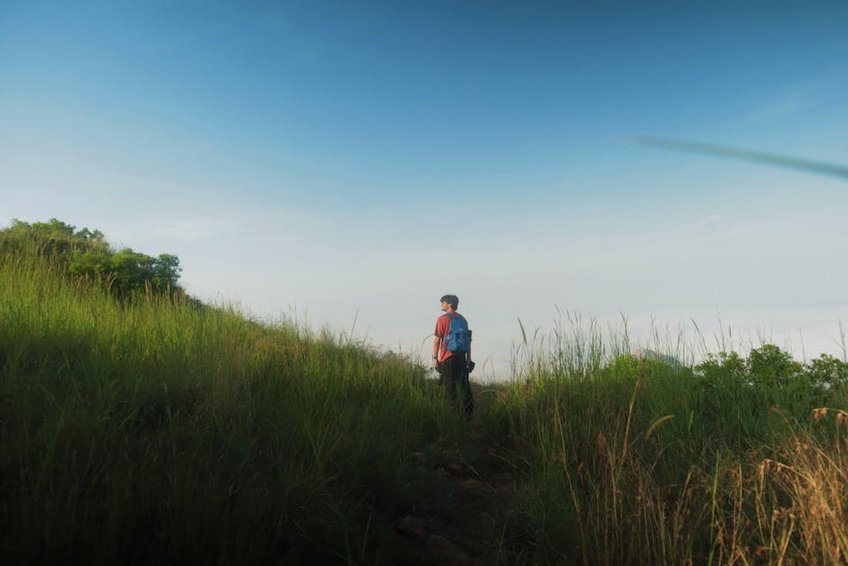Rwanda Gorilla Trekking Experience: Your Ultimate Adventure Guide
Imagine standing mere feet away from a majestic mountain gorilla family in the misty forests of Rwanda, hearing their gentle grunts and watching their human-like behaviors unfold before your eyes. This Rwanda gorilla trekking experience offers one of the most profound wildlife encounters on Earth, combining physical adventure with emotional connection in a way that few other travel experiences can match. Located in the Virunga Mountains of Volcanoes National Park, this bucket-list adventure brings you face-to-face with endangered mountain gorillas in their natural habitat, creating memories that will last a lifetime. You’ll trek through lush bamboo forests and volcanic terrain with experienced guides, learning about conservation efforts that have helped protect these incredible primates. Whether you’re an avid wildlife enthusiast or simply seeking a transformative journey, this experience will challenge your body while enriching your soul through direct interaction with one of our closest genetic relatives in the animal kingdom.
Rwanda Gorilla Trekking Experience – Essential Information
Before embarking on this incredible adventure, understanding the fundamentals of gorilla trekking in Rwanda will help you prepare properly and maximize your enjoyment. The Rwanda gorilla trekking experience operates under strict regulations designed to protect both visitors and the gorillas, with permits required for all treks and limited groups of eight people per gorilla family visit. These gentle giants share about 98% of their DNA with humans, making encounters feel surprisingly personal and emotional. Rwanda has become a conservation success story, with gorilla populations steadily increasing thanks to sustainable tourism practices and community involvement. You’ll need reasonable physical fitness as treks can last from 30 minutes to several hours through challenging terrain at altitudes between 2,400-4,000 meters. The experience includes exactly one hour with the gorillas once located, during which you’ll observe their natural behaviors, social structures, and sometimes even playful interactions between silverbacks and infants.
What is Gorilla Trekking? – Understanding the Experience
- Gorilla trekking involves hiking through forested mountains with trained guides and trackers to locate habituated gorilla families that have become accustomed to human presence for conservation and tourism purposes.
- Each trekking group is limited to eight visitors plus guides, with strict rules about maintaining 7-meter distance from the gorillas, no flash photography, and limited time spent with each family to minimize disturbance.
- The experience blends physical adventure with wildlife education, as guides share insights about gorilla behavior, conservation efforts, and the specific family you’re visiting, often knowing individual gorillas by name and personality.
- Budget option: $1,500-2,500 per person for basic accommodations, shared transportation, and gorilla permit ($1,500) covering 3-4 day trip including park fees, guides, and necessary services.
- Mid-range option: $2,500-4,000 per person for comfortable lodges, private transfers, additional activities like golden monkey tracking, and better meals across 5-7 day comprehensive Rwanda itinerary.
- Luxury option: $4,000-7,000+ per person for premium lodges like Bisate Lodge or Singita Kwitonda, exclusive experiences, private guides, and extended stays combining multiple national parks with gourmet dining.
- Rwanda Development Board – Official Tourism Information
- WWF Mountain Gorilla Conservation Project
- Dian Fossey Gorilla Fund International
Why Choose Rwanda for Gorilla Trekking? – Key Advantages
Rwanda offers several distinct advantages for your gorilla trekking experience compared to other destinations in East Africa. The country’s compact size means shorter travel times from Kigali to Volcanoes National Park, typically just two hours by road, allowing you to maximize your time with the gorillas. Rwanda’s well-developed tourism infrastructure ensures high-quality guides, comfortable accommodations, and excellent safety standards throughout your journey. The government’s commitment to conservation through revenue sharing with local communities has created strong incentives for protecting gorillas and their habitat. Additionally, Rwanda’s clean cities, good roads, and political stability make it an appealing choice for first-time visitors to Africa who want an unforgettable wildlife experience without logistical challenges. The country’s “gorilla guardianship” program demonstrates how tourism directly contributes to species preservation and community development.
Rwanda Gorilla Trekking Experience – Planning Your Trip
Proper planning transforms your Rwanda gorilla trekking experience from a simple activity into a seamless, memorable adventure. Begin by securing your gorilla permit at least 6-9 months in advance, especially if traveling during peak seasons, as only 96 permits are available daily across twelve habituated gorilla families. Work with reputable tour operators who understand the logistics, physical requirements, and conservation ethics of responsible gorilla tourism. Consider combining your trek with other Rwandan attractions like Nyungwe Forest chimpanzee tracking, Akagera National Park safaris, or cultural experiences in Kigali to create a comprehensive Rwanda itinerary. You’ll need to arrange international flights to Kigali International Airport, travel insurance that covers adventure activities at high altitudes, and appropriate vaccinations including yellow fever certification. Planning also involves physical preparation through regular cardio exercise and hiking practice to ensure you can handle the trek’s demands comfortably.
Best Time to Visit Rwanda for Gorilla Trekking
The optimal time for your Rwanda gorilla trekking experience depends on weather preferences and crowd tolerance, with two dry seasons offering the best conditions. June through September provides the clearest skies and easiest trekking conditions, with minimal rainfall and moderate temperatures, though this is also the busiest period requiring earliest booking. December to February offers another excellent window with drier weather and good visibility, perfect for photography and comfortable hiking. The rainy seasons from March to May and October to November present challenges with muddy, slippery trails and potential downpours, but also offer advantages like fewer tourists, easier permit availability, and lush, vibrant landscapes. Regardless of season, temperatures in Volcanoes National Park typically range from 50-70°F (10-21°C), requiring layered clothing for changing conditions throughout your trekking day.
Budget Planning and Costs
Essential Preparation Checklist
Preparing properly for your Rwanda gorilla trekking experience ensures your safety, comfort, and maximum enjoyment throughout the adventure. Start with physical conditioning several months beforehand, focusing on cardiovascular fitness and leg strength through regular hiking, stair climbing, or treadmill workouts at incline. Pack appropriate gear including waterproof hiking boots with ankle support, moisture-wicking clothing layers, gardening gloves for pushing through vegetation, waterproof daypack, and broken-in footwear to prevent blisters. Health preparations should include consulting your doctor about altitude medication if prone to sickness, obtaining necessary vaccinations, and packing a basic medical kit with pain relievers, bandages, and any personal medications. Don’t forget your camera with extra batteries (no flash), binoculars for wildlife spotting, and cash for tipping guides and porters who significantly enhance your experience.

Rwanda Gorilla Trekking Experience – Top Attractions and Activities
While the gorillas themselves represent the main attraction, the broader Rwanda gorilla trekking experience encompasses numerous complementary activities that enrich your visit to Volcanoes National Park. Beyond gorilla encounters, you can track golden monkeys through bamboo forests, visit the Ellen DeGeneres Campus of the Dian Fossey Gorilla Fund for conservation education, or hike to Dian Fossey’s grave and research center for historical context. The park offers spectacular volcano climbs including Mount Bisoke with its crater lake or the more challenging Mount Karisimbi overnight trek for adventurous travelers. Cultural experiences like Iby’Iwacu Cultural Village provide insight into traditional Rwandan life, while nearby Lake Kivu offers relaxation opportunities with beach resorts and water activities. Each element combines to create a multifaceted journey that connects you with Rwanda’s natural wonders, conservation successes, and rich cultural heritage beyond the primary gorilla encounter.
Must-See Highlights in Volcanoes National Park
Your Rwanda gorilla trekking experience centers around Volcanoes National Park, where five of the eight Virunga volcanoes create a dramatic backdrop for wildlife encounters. The park’s twelve habituated gorilla families each offer unique viewing opportunities, from the large Susa group with multiple silverbacks to smaller families like Amahoro, meaning “peace” in Kinyarwanda. Beyond gorillas, the park protects golden monkeys, forest elephants, spotted hyenas, and over 200 bird species including many Rwandan endemics. The Musanze Caves provide fascinating geological exploration opportunities, with underground lava tube systems stretching approximately 1.2 miles (2 km) that served as historical shelters and hideouts. The park’s varying ecosystems from bamboo forest to alpine meadows create constantly changing scenery throughout your trek, with panoramic viewpoints offering spectacular photo opportunities of the volcanic landscape and surrounding countryside.
Hidden Gems and Local Favorites
Beyond the main attractions, several lesser-known experiences can enhance your Rwanda gorilla trekking adventure with local flavor and unique perspectives. The Red Rocks Intercultural Exchange in Musanze offers traditional banana beer brewing lessons, basket weaving workshops, and community homestays that directly benefit local families. Nearby, the Buhanga Eco-Park provides serene forest walks through Rwanda’s ancient royal history, where kings were traditionally crowned in sacred groves. For bird enthusiasts, the Gishwati-Mukura National Park offers excellent forest birding with specialized guides, while Congo Nile Trail along Lake Kivu presents breathtaking hiking and cycling routes with lakeside lodges. These off-the-beaten-path experiences not only diversify your itinerary but also distribute tourism benefits to surrounding communities, aligning with Rwanda’s sustainable development goals and providing more authentic cultural connections during your visit.
Rwanda Gorilla Trekking Experience – Practical Travel Information
Navigating the practical aspects of your Rwanda gorilla trekking experience ensures smooth logistics from arrival to departure. Most international visitors fly into Kigali International Airport (KGL), with efficient visa-on-arrival processes for US and EU passport holders typically costing $50 USD valid for 30 days. From Kigali, you’ll travel approximately 2-3 hours by road to Musanze town, the gateway to Volcanoes National Park, with options ranging from private transfers to shared shuttle services. Accommodation choices span from luxury lodges with volcano views to comfortable mid-range hotels and budget guesthouses, all requiring advance booking especially during peak seasons. Understanding permit procedures, park regulations, and daily schedules helps manage expectations, with early morning briefings, assigned gorilla families based on fitness levels, and strict adherence to conservation protocols throughout your trekking experience.
| Accommodation Category | Features and Amenities | Price Range (USD per night) |
|---|---|---|
| Luxury Lodges | Private butlers, spa services, gourmet dining, volcano views, conservation programs | $800-1,500 |
| Mid-Range Hotels | Comfortable rooms, restaurant, bar, swimming pool, tour desk services | $150-400 |
| Budget Options | Basic rooms, shared facilities, local meals, community-run establishments | $50-150 |


